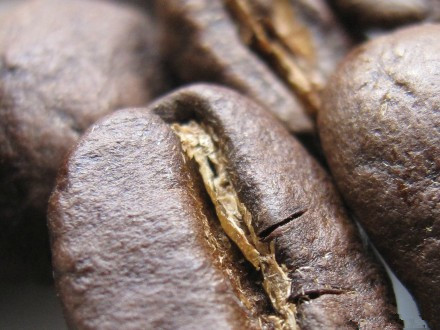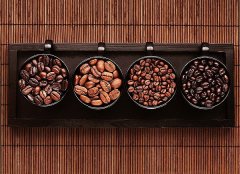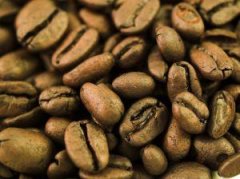Twelve famous high-quality coffee producing areas in Indonesia

Coffee trees were introduced to Indonesia by the Dutch in the mid-17th century (some official sources say earlier). 1712 The first coffee from Java arrives in Amsterdam. However, in 1877 coffee trees on all plantations were destroyed by coffee rust, and robert coffee trees had to be imported from Africa to replace the original species. Today only 6 -10% of coffee beans are Arabica beans. Indonesia is the world's leading producer of Roscoff coffee, with most coffee coming from small plantations, accounting for about 90% of total production.
Coffee from Indonesia:
Coffee is produced throughout Indonesia, and Java occupies an extremely important place in the history of coffee.
The best growing areas in the whole archipelago are Java, Sumatra, Sulawesi and Flores.
Java produces fine aromatic coffee with relatively low acidity, fine taste and good balance. Java coffee has a superior aroma and acidity to Sumatra and Sulawesi coffees. The best plantations in Java are Blawan, Jambit, Kayumas and Pankur. Java mocha coffee is a blend of Java coffee and Yemeni mocha coffee.
Sumatra, Indonesia's second largest island, is the center of Indonesia's oil industry. Rubber and timber on the island are also famous export commodities. Sumatra coffee, however, is more striking, similar to Java coffee, but slightly heavier in size. Mandheling and Ankola coffee beans are also highly valued, the former even being hailed as the world's most granular coffee beans.
Sulawesi, located between Borneo and New Guinea, is sometimes referred to as Celebes. The coffee produced on the island is full of particles and rich in flavor. The best coffee beans are grown in Kalossi and Rantepao in the south of the island. Among the many tastes, try Celebes Carlochy Coffee.
One of the main coffee producers in New Guinea is Sigri Plantation, which produces the same overall style of archipelagic coffee, with full grains and good balance.
Indonesian coffee features:
Overall, Indonesian coffee has a strong flavor, a mellow taste, a slightly syrupy taste and excellent acidity. What appeals to consumers is the exceptional quality of its arabic coffee beans. You can add milk or cream to high-quality Indonesian coffee without worrying about affecting its taste. Indonesian coffee is divided into six grades, the best is AP. But no one knows exactly what these two capital letters represent.
Flavor: Sumatra coffee is granular, syrupy and chocolatey, suitable for drinking after meals; Java coffee is full of granules, spicy, medium acidity
Recommended Roasting Method: Medium to deep roasting, suitable for making premium espresso or blended coffee drinks
★★★: Excellent
Indonesian Coffee Market:
The two main export markets for Indonesian coffee are Germany and Japan, which reflects the excellent quality of the coffee. Although Indonesia produces so much good coffee, it is puzzling that its residents prefer Turkish coffee to its famed European coffee.
When ships replaced sailboats, coffee from these islands faced the same problem as Indian coffee from Mysore-that consumers were used to coffee affected by long journeys and were reluctant to accept the taste of "fresh" coffee. To solve this problem, the Indonesian government has tried to imitate coffee affected by long trips, and they have "stored" coffee beans for up to a year. However, the taste of this moist coffee is not widely accepted, so that it affects the good reputation of coffee. However, Indonesian "storage" coffee or "journey" coffee is still produced today. It is sold under the brand names Old Government, Old Brown and Ool Java.
Important Notice :
前街咖啡 FrontStreet Coffee has moved to new addredd:
FrontStreet Coffee Address: 315,Donghua East Road,GuangZhou
Tel:020 38364473
- Prev

Twelve famous high-quality coffee producing areas in Kenya
In 1878, the British landed coffee in Africa and set up a coffee plantation in Kenya in the 19th century, when Ethiopian coffee drinks were imported to Kenya through southern Yemen. But it was not until the early 20 th century that the Bourbon Coffee Tree was saint. The Austin Mission (St.AustinMission) was introduced. Origin of coffee in Kenya: most coffee in Kenya (Kenya) grows at 1500 above sea level
- Next

Twelve famous high-quality coffee producing areas in Puerto Rico
In 1736, coffee trees were introduced from Martinique to PuertoRico. Most of the early coffee was grown by immigrants from Corsica. Coffee farms were once prosperous in the 19th century, but the rise of sugarcane and crop farming and the impact of hurricanes and wars made the coffee industry lag behind and is now recovering. The origin of coffee in Puerto Rico: Puerto Rico is the most
Related
- Guji coffee producing area of Guji, Ethiopia: Humbela, Shakiso, Wulaga
- What is the most expensive variety of Qiloso in BOP multi-variety group?
- How to store the coffee beans bought home?
- Why are Yemeni coffee beans so rare now?
- Ethiopian Sidamo all Red Fruit Sun Sun Santa Vini Coffee beans
- SOE is mostly sour? What does it mean? Is it a single bean? what's the difference between it and Italian blending?
- Is Italian coffee beans suitable for making hand-brewed coffee?
- How to choose coffee beans when making cold coffee? What kind of coffee beans are suitable for making cold coffee?
- Just entered the pit to make coffee, what kind of coffee beans should be chosen?
- Can only Japan buy real Blue Mountain Coffee? What are authentic Jamaican Blue Mountain coffee beans?

